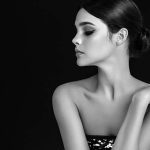The Evolution of Diversity in the Modeling Industry
The modeling industry has come a long way in recent years when it comes to embracing diversity and inclusivity. Gone are the days when a single, narrow standard of beauty dominated the runway and magazine covers. Today, the industry is gradually breaking free from those limitations and becoming more representative of the real world. In this blog, we’ll explore the evolution of diversity in the modeling industry.
The Traditional Beauty Standard
Historically, the modeling industry predominantly adhered to a Eurocentric standard of beauty. Tall, slender, and fair-skinned models were favored, leaving little room for those who didn’t fit this mold. This approach not only limited the industry’s potential but also sent a harmful message to the public about what constituted beauty
The Turning Point
In the 21st century, the fashion and modeling industry began to shift. Brands and designers started to realize the importance of inclusivity and authenticity in their campaigns. They recognized that showcasing a more diverse range of faces and bodies could resonate with a broader audience and reflect the reality of their customer base.
Diversity Beyond Race and Body Shape
Diversity in modeling is not just about race and body shape. It also encompasses age, gender, abilities, and more. Models of different ages, genders, and abilities are now gracing the pages of fashion magazines and walking down runways, showing that beauty knows no bounds.
Social Media and Influencer Culture
The rise of social media and influencer culture has played a significant role in pushing for diversity in modeling. Platforms like Instagram have given underrepresented individuals a voice and a space to showcase their unique beauty. As a result, brands have started to collaborate with influencers who don’t conform to traditional standards, expanding the definition of beauty.
The Road Ahead
While the modeling industry has made significant progress in embracing diversity, there is still work to be done. True representation goes beyond tokenism, and it involves creating a culture of inclusivity that permeates all aspects of the industry. Brands, designers, agencies, and consumers all have a role to play in continuing this evolution.
In conclusion, the modeling industry’s journey towards diversity and inclusivity is a positive and ongoing one. By embracing models of all backgrounds, body types, ages, and abilities, the industry is not only reflecting a more accurate portrayal of society but also redefining beauty for the better.

